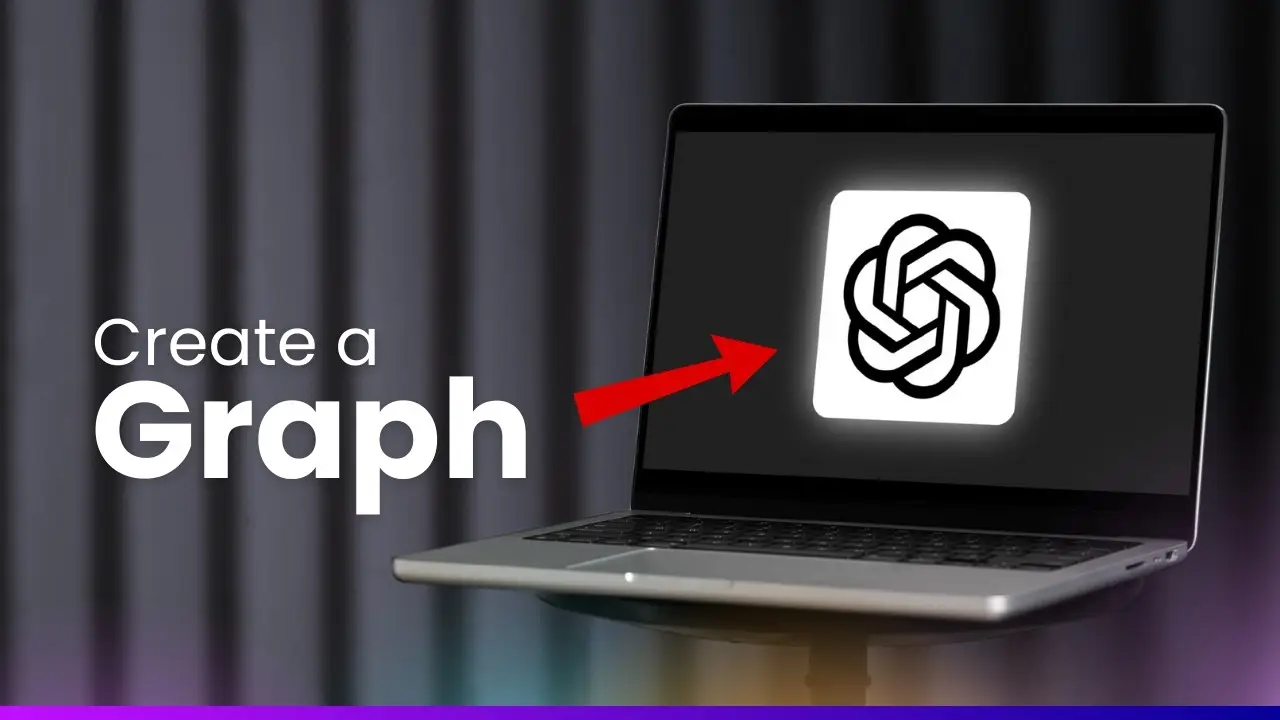Key Takeaways:
- ChatGPT can generate visual data like graphs and charts directly from uploaded documents, saving time on manual entry.
- It offers SEO-friendly tools such as renaming image files and creating alt text for accessibility.
- Advanced features like Retrieval-Augmented Generation (RAG) and interactive content creation help humanize AI-generated content and boost user engagement.
If you’re like me, you’ve probably used ChatGPT for the basics—drafting blog posts, brainstorming ideas, or even scripting YouTube videos. These are great use cases, no doubt. But here’s the thing: ChatGPT has a treasure trove of hidden features that can take your productivity to the next level. Whether you’re a content creator, marketer, or just someone looking to make life a little easier, these features are game-changers.
Generating Visual Data: Graphs and Charts Made Easy
One of the most overlooked features of ChatGPT is its ability to generate visual data like bar graphs or pie charts directly from uploaded documents. Imagine uploading a spreadsheet and asking ChatGPT to create a bar graph based on specific columns. Within seconds, you get a downloadable image file—complete with an SEO-friendly name.
Here’s how it works:
- Upload your document containing data.
- Use a prompt like: “Generate a bar graph from this data showing sales trends over the last quarter.”
- Request an SEO-friendly filename for the image.
This feature eliminates the need for manual data entry in spreadsheet software, saving you hours of work. For more tips on creating engaging visuals for your website, check out how to create online tools without coding.
SEO-Friendly Image Optimization
Speaking of images, ChatGPT also excels in making your visuals SEO-friendly. You can upload an existing image and ask it to generate concise alt text that follows best practices for accessibility and search engine optimization. This is especially useful if you’re managing a website with lots of images.
Here’s an example prompt:
“Create alt text for this image under 120 characters that describes its content clearly.”
Alt text not only improves accessibility but also boosts your site’s SEO ranking—a win-win situation. If you’re curious about more ways to optimize images for SEO, don’t miss this guide.
Humanizing AI Content with Negative Prompting
Let’s face it: AI-generated content can sometimes feel robotic. That’s where Retrieval-Augmented Generation (RAG) and negative prompting come into play. By pairing ChatGPT with external documents or eliminating overused phrases, you can make your content more human-like and unique.
For instance:
- Use RAG to guide ChatGPT’s responses with specific reference materials.
- Apply negative prompting to avoid clichés or repetitive language.
This technique is particularly effective for crafting articles that pass AI detection tools with flying colors. Learn more about this approach in how to humanize AI content.
Creating Interactive Content
Interactive elements like calculators, quizzes, or mini-games can significantly boost user engagement on your website. Did you know that ChatGPT can generate code for these tools? Simply provide a detailed prompt describing what you need, and it will produce ready-to-use code.
Here’s an example:
“Create code for an online calculator that calculates monthly mortgage payments based on loan amount, interest rate, and term.”
Once generated, you can embed the code directly into your site. Interactive content not only keeps visitors on your page longer but also improves your Google rankings by increasing dwell time. For more insights into building such tools, check out how to create online tools without coding.
Voice Mode: A Hands-Free Assistant
ChatGPT’s desktop version now features a voice mode that allows you to interact with it verbally. This is perfect for multitasking—you can brainstorm ideas or troubleshoot problems without stopping what you’re doing.
For example:
- Ask it for creative website names while drafting designs.
- Get instant answers to technical questions without typing.
Although still limited in some aspects, voice mode is a promising feature that adds convenience to your workflow.
Boosting SEO with Schema Markup
Another hidden gem is ChatGPT’s ability to generate schema markup for your website. Schema markup helps search engines understand your content better and enables rich snippets in search results—think star ratings or event dates.
To implement this:
- Ask ChatGPT: “Generate schema markup for a blog post about AI in marketing.”
- Copy-paste the code into your site’s HTML.
For those new to schema markup, it’s worth exploring how to rank on Bing effortlessly as part of your broader SEO strategy.
Practical Applications of These Features
Here’s how I’ve incorporated these features into my own workflow:
| Feature | Application | Benefit |
|---|---|---|
| Visual Data Generation | Creating charts from sales reports | Saves hours of manual work |
| Alt Text Creation | Optimizing blog images | Improves accessibility and SEO |
| Negative Prompting | Writing human-like articles | Enhances authenticity |
| Interactive Tools | Embedding calculators | Boosts user engagement |
| Voice Mode | Brainstorming ideas hands-free | Increases productivity |
These tools are not just cool tricks—they’re practical solutions that save time and improve content quality.
Final Thoughts
ChatGPT is far more than a text generator; it’s a versatile tool that can revolutionize how you create and manage content. From generating visual data to optimizing images for SEO, its hidden features offer something valuable for everyone—whether you’re a seasoned marketer or just starting out.
If you’re ready to take your productivity to new heights, start exploring these features today. And if you want even more tips on maximizing AI tools, don’t miss our guide on content creation prompts that save time.
What’s your favorite hidden feature of ChatGPT? Let me know in the comments below!






